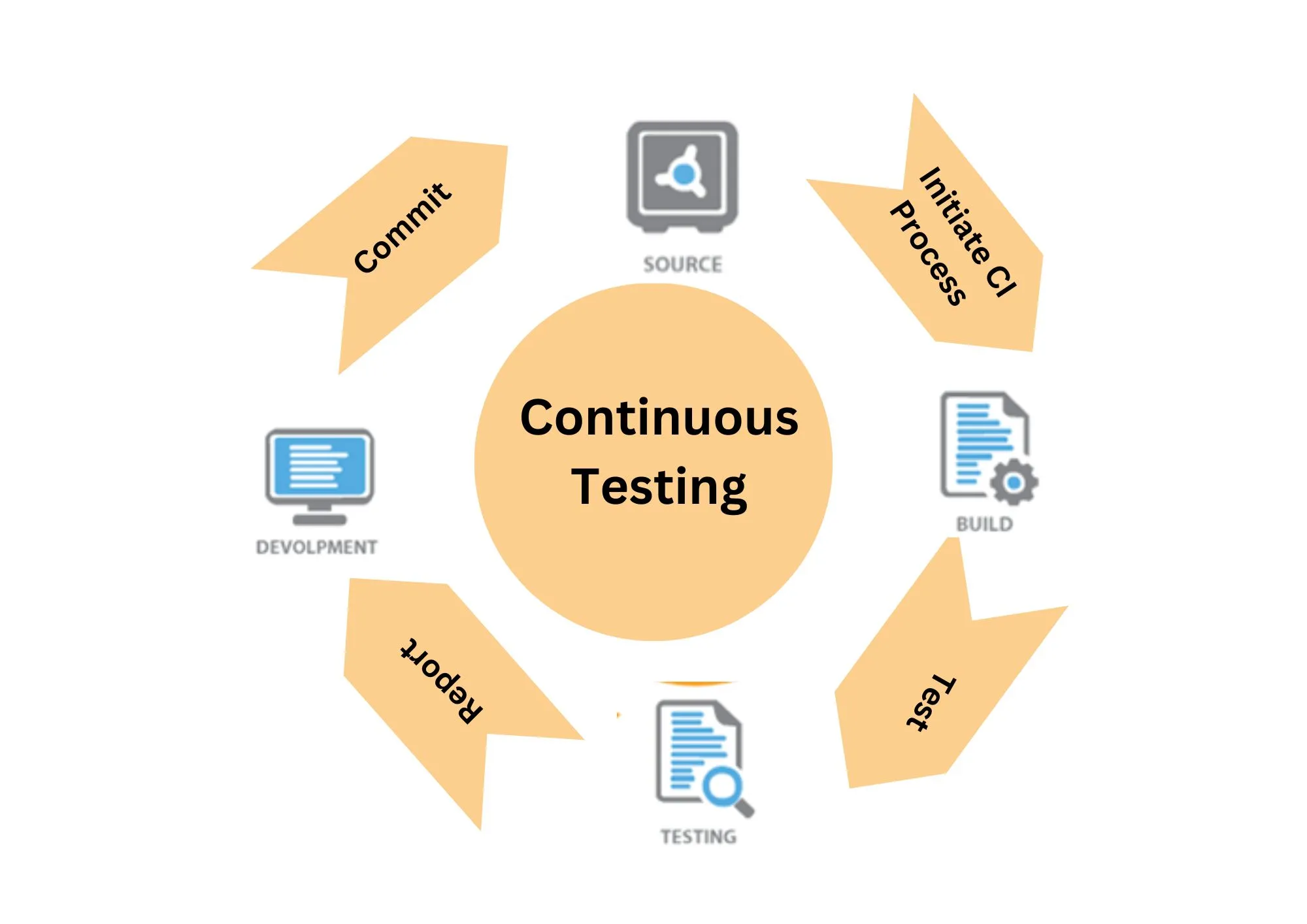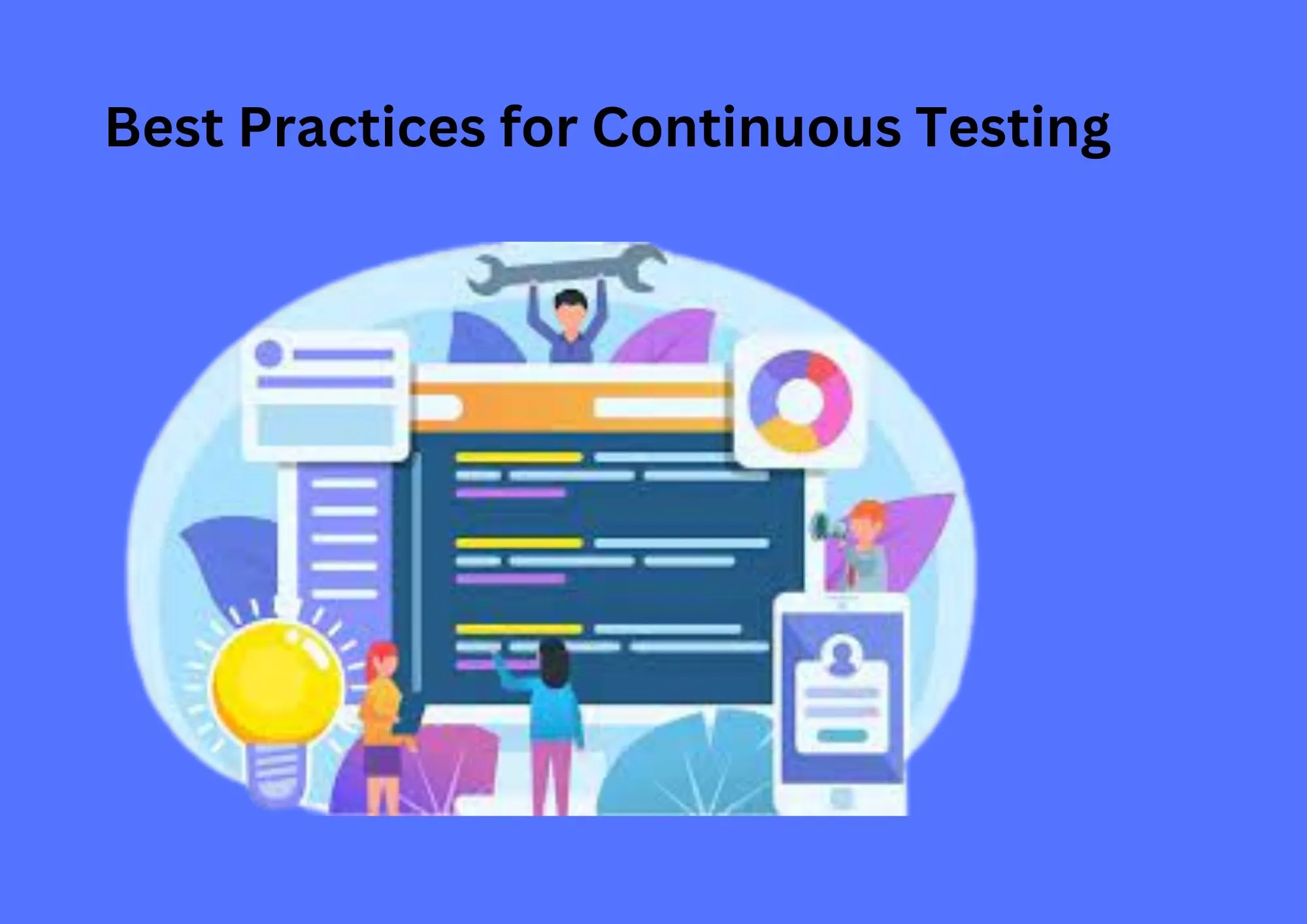The idea behind DevTestOps was to introduce continuous testing at each phase of the development process with DevOps. DevTestOps make sure that Quality feedback is continuous and important with Development and Operations related tasks.
What is DevOps?
DevOps is a process which includes Development and IT Operations. The idea behind DevOps is to curtail the development cycle and to deliver High Quality software product. DevOps is compatible with Agile software development, various DevOps features came from Agile methodology
What is DevTestOps?
The goal of DevTestOps is to increase the visibility of testers and testing process as important part of DevOps.
DevTestOps is a composition of DevOps and Continuous Testing. The process involves testing early, testing often, and testing throughout the CI/CD pipeline.
DevTestOps highlights the Importance of the Quality Team in the development of the software application with the Ops Task. DevTestOps highlight that the continuous testing should be integrated at every stages of CI/CD pipeline. It imposes importance on the continuous testing feedback to developers throughout the stages of software development, thus lower the business risk and the chances of finding bugs at later stages.
In the Agile methodology, all members of Agile team are equally responsible for the quality of the software and the success of the project.
Hence, testing of an agile project is performed by the entire team, not just Quality team but also team members whose main expertise may be in programming, business analysis, and database or system operation.
Below image clearly shows how testing is included in different phases of a DevOps process.
DevTestOps vs DevOps?
DevOps focuses on automation of manual operations of the software development life cycle (SDLC) which results in faster delivery of the application. DevOps is highly successful however there are chances of missing critical bugs, scenarios and business requirements in the application as continuous testing is not executed.
To curtail the changes of missing bugs, features & business requirements, DevTestOps came into picture where Continuous Testing was focused as a important part of the software delivery process.
Continuous Testing
The word ‘continuous’ means the code is developed, tested, and deployed continuously. The testers find out possible scenarios from requirements, create testcases and execute test cases from the initial phases of the development process and shares feedback with the development team.
It is continuous execution of automated tests and provide immediate feedback based on the business changes related with the application and reducing risks before moving to next SDLC phase.
Continuous Testing helps in testing the code throughout the SDLC process which decreases the gap between testers, developers, and the operations team. The E2E automation of test cases help to incorporate QA into DevOps processes to support continuity.
The scope of Continuous Testing is very vast including validation of the functional and non-functional requirements of the application. It involves API testing, unit testing, integration testing and system testing of the application all performed under a simulated environment with test automation.
Need of DevTestOps?
Performing continuous integration with continuous delivery and continuous deployment enables the enablement of DevOps. Hence, to enable DevTestOps – continuous testing needs to be integrated to already applied structure of continuous integration + continuous delivery + continuous deployment.
With DevTestOps, QA Team play a crucial role throughout SDLC process by providing testing feedback at each stage through continuous testing.
Performing testing at each phase and automating most of the processes can result in the following improvements:
- Detecting bugs at an early phase makes them easier to fix, resulting in the timely delivery of the software.
- It reduces the regression cycle from weeks to hours by automating the processes.
- The development and testing team work together with leading to a better understanding of the application and increasing the quality of the software.
- The tester gets a possibility to perform all types of testing during the product development.
- The tester becomes an equal owner of the software as a developer.
- Automated build and deployment speed up the process and avoids human error and dependency.
Myths about DevTestOps
- Continuous Testing requires 100% automation: As we all know, achieving 100% automation of software is impossible. Therefore, the Continuous Testing process involves the execution of many tests manually.
- Collaboration is difficult in large Organisation: Large companies do not benefit from continuous testing as they have vast development and QA teams which make collaboration tough.
- It is expensive: The one-time investment made results in a significant return on investment once the team is provisioned with functionality.
- Better quality of code as no commit goes untested.
- Developer receives immediate feedback from the tester which helps in finding the root cause and easily fixing the defects in less time.
- Detecting bugs in the early stages results in lower costs for fixing them.
- Automated processes, ensure no human errors.
Best Practices to follow in Continuous Testing
Do not automate test case only but also the repetitive process. It will save a lot of time.
1. Selection of tool: To make testing effective, faster, and easier, one should select the tool wisely.
2. Transparent communication in Team: Communication and understanding between all the teams should be transparent. It avoids confusion and results in good productivity.
3. Performance testing: It should play an important role during the delivery cycle to avoid any crash issue which may result due to high volume user inflow.
4. Perform Multi-Continuous Testing Tools-layer testing: During the delivery process, one should include all kinds of testing such as integration, API, GUI, and database testing. Moreover, most of the testing types should incorporate automation.
Continuous Testing Tools
Below are Tools for Continuous Testing:
DevOps focus on various types of testing such as unit testing, system testing, integration testing, E2E testing, performance testing, security testing, cross-platform testing, multiple platforms testing, responsive testing, and API testing. There are various Continuous Testing tools in the market. These tools automate the test process from the initial phases such as planning, requirements gathering, build creation, testcase execution, bug logging, and test analysis.
- Selenium: Selenium is an open-source tool, used for functional automation, supports various browsers and operating systems. As it requires technical knowledge, it is difficult to use. Selenium does not support Mobile automation.
- Testsigma: Testsigma focuses to enhance automation and testing speed. Creating test cases in simple English makes the formation of test cases simple, easy, and fast.You will feel like you are not automating the testcases but writing test cases.
- Watir: Watir is an open-source tool for web automation and continuous testing. Watir is based on ruby language.
- Rational functional tester: One of the developed tools in the industry that supports functional, data-driven, API, performance, and regression testing. This tool need knowledge of .net and java scripting for automation.
- Appium: It is tool for mobile automation testing. It is a wrapper on selenium.
A smooth DevTestOps environment can assemble when Quality team works jointly with the Development team and seeks support for continuous development throughout DevOps.
Hence, if an enterprise wants to release high-quality software in the market without delay DevTestOps is the solution.
https://www.softwaretestingleaders.com/




One Reply to “What is DevTestOps in Continuous Testing?”